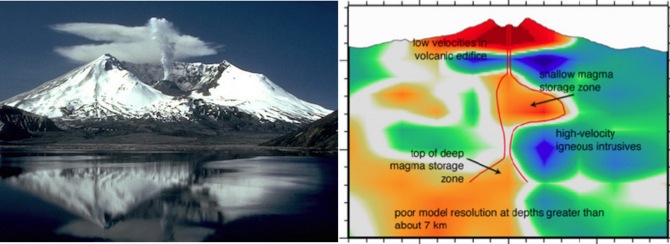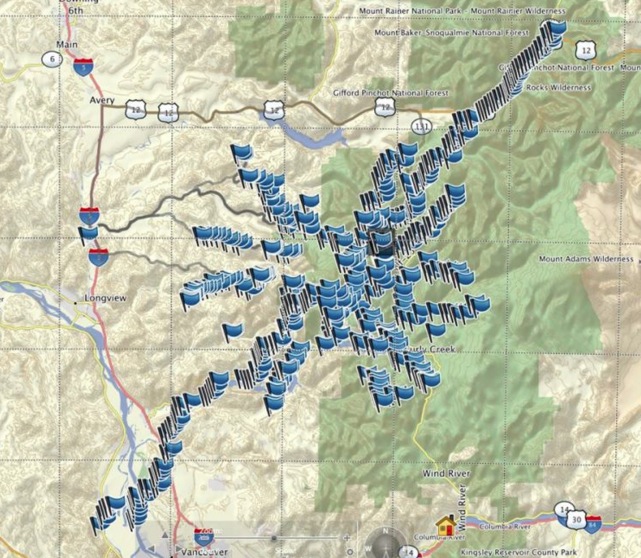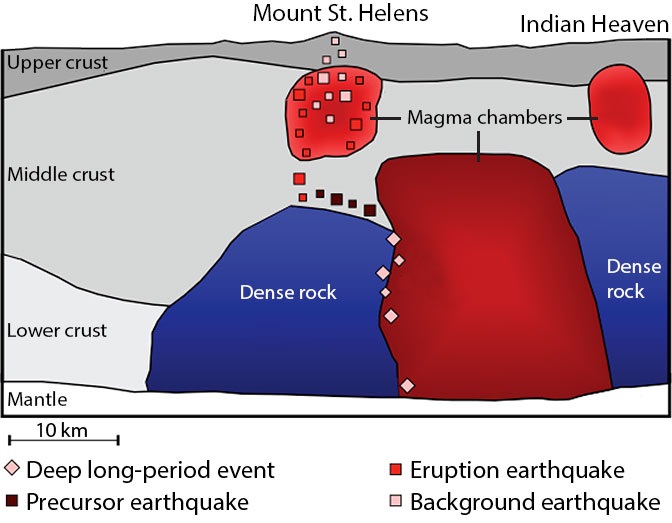
© Lyn Topinka/USGS; IMUSH
It took 2,500 seismometers, 23 explosive blasts, and countless earthquakes, but researchers now have a much better idea of what the magma chambers look like deep below Mount Saint Helens. The weird bit? It looks like it shares a magma chamber with a whole field of local volcanoes.
The iconic volcano of the Pacific Northwest is directly fed by a shallow magma chamber, but that wasn't enough to satisfy the researchers behind the interdisciplinary
Imaging Magma Under Saint Helens (IMUSH) project. They're using a variety of geophysical techniques to peer deep into the Earth in an attempt to understand the deeper and more complicated plumbing under the volcano. Their first batch of results suggest that like the second chamber lurking deep below Yellowstone, Mount Saint Helens also has a deeper, larger second chamber.
Geophysics works by detecting the differences between different physical characteristics of rocks. How quickly seismic waves travel give indications of rock density, while electrical methods can get a glimpse at the rock's conductivity. By comparing the spacial locations of different properties, geophysicists can interpret solid rock from warm chambers filled with pre-melt magma. These aren't deep lakes of liquid lava; the magma chambers have shockingly little melt and are more ductile than fluid.
The newly-discovered deeper chamber is big, but we don't yet know its full dimensions. Although the researchers have so far only put together a 2D slice of the structure, it's plausible the chamber extends out just as wide. If it does, it could be a single feeder-chamber for the entire realm of inactive and dormant volcanoes in the region like Mount Adams and the rest of the Indian Heaven volcanic field.

© IMUSHFewer than half the 2,500 seismometer stations used for the research study.
The research team also thinks they've found a narrow tube connecting this chamber to the one under Mount Saint Helens. By monitoring for earthquakes along this tube, seismologists will be better able to predict magma movement in advance of any future eruptions.
While most of the seismometers will be removed now the primary active phase of the experiment is complete, 75 will stay in place to continue subsurface mapping using seismic waves from any coincidental earthquakes that shake the mountain.



Comment: See also: